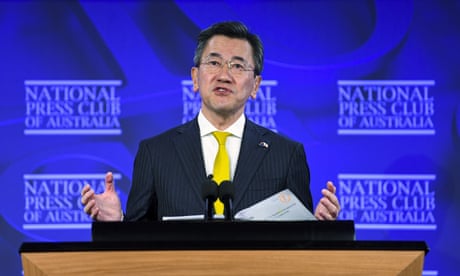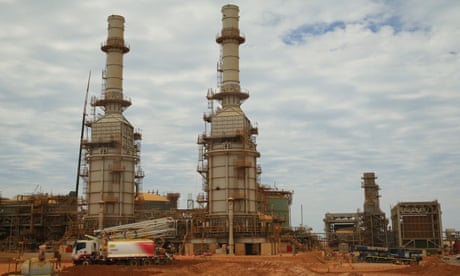Subsidies for India’s renewable sector are falling, needs renewed support, says study
by Mayank Aggarwal on 22 July 2021
As India’s renewable energy sector is showcased as evidence of efforts to combat climate change, the government’s subsidy support to the clean energy sector has fallen over the past few years, a study has found.
The research shows that while the subsidy support for renewable energy has fallen, it has increased for the oil and gas sector and support for coal has continued despite the health impact on citizens.
Meanwhile, subsidy for electric vehicles has increased, highlighted the report and recommended that the government continue to provide financial and non-financial support for the growth of the sector.
The government’s push for renewable energy has been one of its main defence against criticism for using fossil fuels. However, government subsidies to the renewable sector have fallen by nearly 45 percent since their peak in (financial year) 2017, according to a latest study, which states that support for the sector needs a revival.
The study, “Mapping India’s Energy Subsidies 2021: Time for renewed support to clean energy”, by the International Institute for Sustainable Development (IISD) and the Council on Energy, Environment and Water (CEEW) found that subsidies to renewable energy fell from Rs. 154 billion (15,470 crore) in (FY) 2017 to Rs. 85.77 billion (Rs. 8,577 crore) in (FY) 2020.
It argued that to ensure India’s clean energy transition is smooth it is crucial that the financial support for the renewable energy sector continues. It explained that the renewable energy subsidies are at a standstill due to a combination of factors including grid-scale solar and wind achieving market parity, lower deployment levels, and subsidy schemes nearing the end of their allocation period.
The report said India’s public sector units make massive annual investments in the energy sector as it is noted that over the last six years from (FY) 2014 to (FY) 2020, the seven energy-related units invested Rs. 2.5 trillion (Rs. 2.5 lakh crore) in 183 projects.
“Overall, this is still heavily skewed toward fossil fuels, which were the focus of 11 times more investment than clean energy in (FY) 2020. An assessment of these seven PSUs found relatively low ambition on clean energy and no planning on how to manage the stranded asset risk of fossil-intensive asset portfolios,” said the study.
Balasubramanian Viswanathan of the IISD, who is one of the co-authors of the study, said it is time for a new wave of support measures that are focused on emerging technologies such as grid integration and storage, decentralised renewable energy, green hydrogen, and offshore wind. Viswanathan explained to Mongabay-India that one of the primary reasons for the decreasing subsidy support is the maturity of the grid-scale solar and wind combined with market forces.
“Also, the first big wave of the subsidy support under the country’s solar mission has come to an end. Moreover, policy uncertainties such as the renegotiation of tariff in the renewable energy projects and introduction of safeguard duty on the modules being imported have led to a decrease in investments,” he said.
He pointed out that to reach 450 GW by 2030, India would need to deploy “historic levels of about 39 GW every year” and that is “hard to imagine without the right support policies.”
“For India to go near the 2030 target of 450 GW, the sector needs a strong push not just in terms of subsidies but also through ramping up of ambition by state-owned companies and an increase in the electric mobility infrastructure, battery storage and grid storage, and other emerging clean technologies,” Viswanathan said.
The study recommended that under its flagship Aatmanirbhar Bharat (self-reliant India) programme, the government should “develop more nuanced subsidies as part of a broader strategy for green industrial policy that considers both the central and state levels and prioritises integrated solar PV manufacturing, electric vehicles, and storage solutions.”
Read more: [Charts] A long road to 2030 for India’s import-heavy solar power sector
The study also revealed that oil and gas subsidies jumped by about 16 percent in (FY) 2020 and reached Rs. 553.47 billion (Rs. 55,347 crore) compared to (FY) 2019 due to financial support for household consumption of liquefied petroleum gas (LPG).
However, in a statement released along with the study, experts note that the LPG subsidies were suspended during the (FY) 2021 oil price crash and have not yet been reintroduced. They emphasise that this may reduce oil and gas subsidies in future years, but has led to new concerns around clean energy access, as no alternative support for clean cooking has been provided.
The study said that the support for fossil fuels has increased as of the latest year of comprehensive data, hitting Rs. 705.78 billion (Rs. 70,578 crore) in (FY) 2020 – which is over seven times the sum of subsidies to clean energy.

It highlighted the support for coal continued. “Concessional tax benefits continue to be the largest subsidy for the (coal) sector, at Rs. 131.54 billion (Rs. 13,154 crore), 87 percent of all coal support. In (FY) 2021, several non-subsidy measures were implemented to incentivise domestic coal production, such as withdrawing or pushing back environmental regulations, despite health impacts for citizens,” it said.
The report stressed that reforming fossil fuel subsidies can generate valuable additional resources for economic recovery from COVID-19 and investments in clean energy.
It further stressed that the “falling prices of grid-scale solar and a drop in demand during COVID-19 have created economic challenges for coal power” and “while coal makes significant contributions to government revenue and rail cross-subsidies, its full social cost is much higher than its net contributions.”
“Such decisions will simply exacerbate pollution-related health problems in a context where major Indian cities have already topped global charts on air pollution, pushing costs onto citizens and the health system. Low GST rates should be reformed, and green taxes such as the coal cess should continue to periodically increase so that the full social costs of coal are reflected in prices,” it said.
Prateek Aggarwal of the CEEW, who is the co-author of the study, in a statement, said: “Redirecting a share of coal tax revenues to clean energy and supporting communities, regions, and livelihoods impacted by the transition will help ensure a just and equitable energy transition. The government should encourage public sector undertakings, which are currently investing more in fossil fuels, to set ambitious targets for high levels of investment in clean energy and establish national capacity in manufacturing.”
Read more: About 40 percent of India’s districts have some form of coal dependency
The report also said that since (FY) 2019, subsidies for electric vehicles have risen more than 2.3 times, reaching Rs. 11.41 billion (Rs. 1,141 crore) in (FY) 2020, mainly driven by growing sales and further support is needed for manufacturing capacity.
It explained that many of the subsidies have been driven by the increase in sales of two-wheeler electric vehicles, up by around 21 percent from (FY) 2019 to 2020 but the sale of four-wheel electric vehicles, however, dropped by 200 units.
“Various states and union territories also support the adoption of the EVs through subsidies for manufacturers, consumers, and charging infrastructure or through government procurement,” it said.
The report also highlighted the need for non-financial incentives for the EVs such as “priority lanes and reserved parking spaces.”
“An estimated investment of Rs. 205.8 billion (Rs. 20,580 crore) will be required toward charging infrastructure development alone. The government is also actively working to support the EV manufacturing industry by framing favourable industrial policies,” it said

According to the report, going forward what is required is an increase in support measures to ensure the “production of cheaper and more efficient EVs” to tackle the current low demand.
“As EV subsidies grow, all efforts must be made to ensure that sustainability remains at the helm of this transition to EVs on all fronts: clean energy supply, prioritising a sustainable supply chain for manufacturing, choosing battery components, and designing a recycling plan,” it said.
Chandra Bhushan, who is president and chief executive officer (CEO) of the International Forum for Environment, Sustainability and Technology (iForest), a think-tank working on environmental and sustainability issues, said that a recent global survey of EVs shows that 39 percent of buses and 44 percent of two-three wheelers sold globally are EVs while in case of vans/trucks and passenger cars, the number is about one percent and four percent respectively.
“Frankly, if India wants to speed up adoption of EVs, it should focus on buses and two/three-wheelers as they are already commercialised. This segment is market-ready and won’t require much subsidy push. However, in the case of electric four-wheelers, there might be a case of subsidies for a limited time. But most importantly, the mainstreaming of EVs requires the government to facilitate the transition through standards, infrastructure and policies like public procurement,” Bhushan told Mongabay-India.
Read more: A large scale shift to electric vehicles may not be as environment friendly as it seems
Article published by mayank







